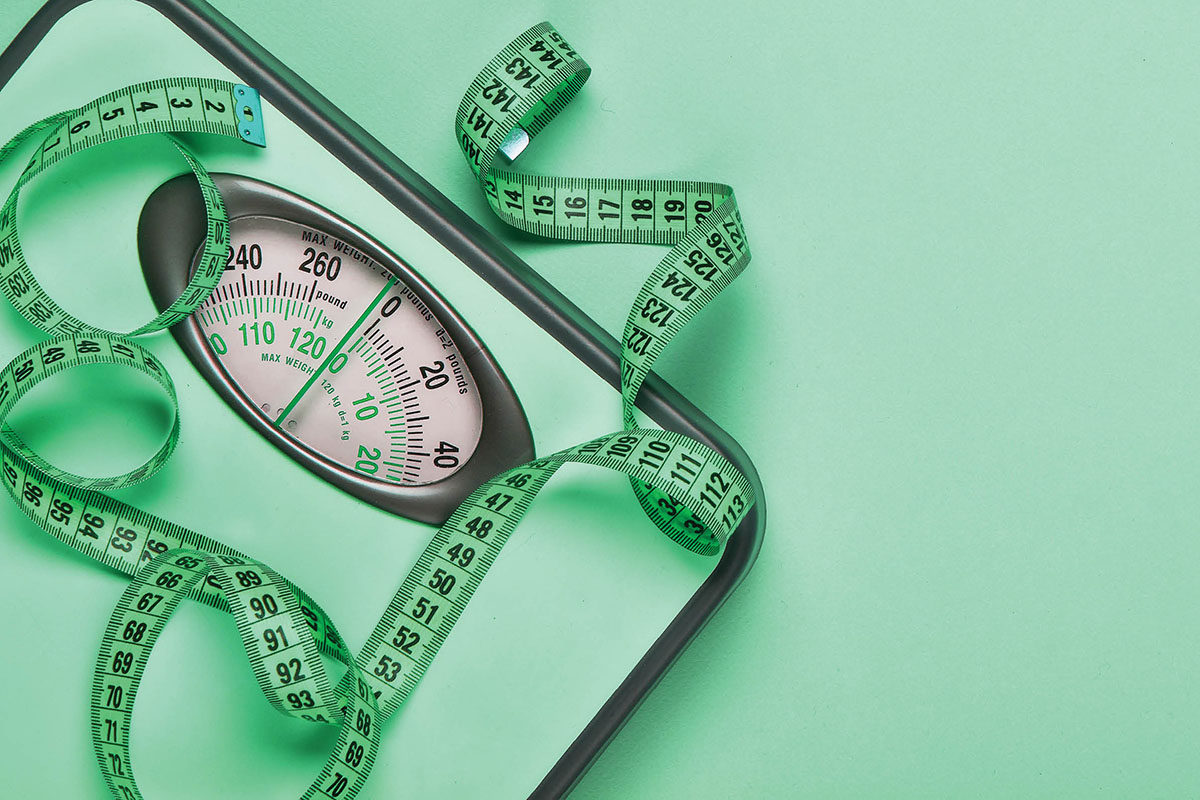
Issue 40 / November 2021
SCIENCE OF LIFE
Body Mass Index May Be a Poor Indicator of Health in Older Adults

Waist circumference is a better indicator of obesity and poor health.
he prevalence of obese and overweight adults continues to increase, affecting at least one in three men and women in the world. Both obesity and excess weight are known to be independently associated with adverse outcomes such as reduced life expectancy, mortality, disability, poor quality of life, increased healthcare utilisation and cardio-metabolic diseases such as diabetes and ischaemic heart disease.
Watch that waistline
The measure of obesity often used in daily practice is Body Mass Index (BMI), but a study led by Associate Professor Reshma Merchant from the Department of Medicine, NUS Medicine, who is also the Head and Senior Consultant of the Division of Geriatric Medicine, National University Hospital, has found that BMI should be interpreted with caution as it may be a poor indicator of fat distribution, especially in older adults. Instead, waist circumference may be a better indicator of obesity and predictor of adverse outcomes, such as cognitive and functional impairment and cardiometabolic diseases, in this group of people. Abnormal fat distribution is thought to signal the release of inflammatory chemicals which can contribute to insulin resistance and poor outcomes. In fact, high BMI, which is an indicator of obesity, does not necessarily lead to poorer outcomes if one has a low waist circumference.
Waist circumference is a measure of central obesity, which is reflective of visceral fat and associated with disability and mortality, and more recently, increased respiratory deterioration in COVID-19 patients.
Defining central obesity as a waist circumference of 90cm for men and 80cm for women, and high BMI as any value above 23.0kg/m2, the study collected BMI profiles, waist circumference measurements as well as cognition and physical assessments, from a total of 754 participants aged 65 years old and above.
At least
1 in 3
men and women in
the world are obese
and overweight
The assessments included mini-mental state examination (MMSE) which is a marker of cognition and memory; handgrip strength (HGS) which measures muscle strength that is associated with conditions such as sarcopenia, frailty and diabetes; and Timed-Up-and-Go (TUG) time which is a marker of walking speed and falls.
Results from the study showed that participants who had high BMI but were not centrally obese had the best scores for the assessments, reflecting better functional and cognitive outcomes, especially in males. Central obesity, in isolation or in combination with high BMI, was associated with worse scores for the assessments. There was also significantly higher prevalence of hypertension, diabetes and multimorbidity in participants who had high BMI and were centrally obese, compared to those with normal BMI and who were not centrally obese.
“A focus on reducing BMI and losing weight alone may not necessarily lead to healthy outcomes. Instead, it is critical to consider central obesity in the equation, and do the right kinds of exercise that can reduce waist circumference, while maintaining and building muscle strength.”
Assoc Prof Reshma Merchant, Department of Medicine, NUS Medicine, Head and Senior Consultant, Division of Geriatric Medicine, National University Hospital
Losing weight may trim muscle as well as fat
With high BMI as a marker of obesity, prevention efforts are often centred on losing weight. However, a focus on weight loss presents another problem, as weight does not differentiate between muscle and fats. BMI cannot distinguish between fat mass, muscle mass and distribution of adipose tissue. Emphasis on weight reduction, without a balanced diet which includes protein and resistance exercise, could result in greater loss of muscle, along with fats. This could compromise ability to maintain muscle mass and function, leading to other detrimental outcomes such as frailty, sarcopenia, increased mortality, and even impaired glucose tolerance. While frailty refers to a state of decreased physiological reserve that makes individuals vulnerable to stress, potentially resulting in falls, disability and increased mortality, sarcopenia is defined as a progressive age-related loss in muscle mass, strength and quality affecting physical performance.
Resistance training burns fat, builds muscle mass
The right types and ‘doses’ of exercise that would achieve the sweet spot of losing fats while maintaining muscle mass are therefore critical in leading to healthy outcomes in older adults. In a set of international exercise recommendations in older adults published by a team led by Assoc Prof Merchant, these highlighted resistance training as most important in maintaining high muscle mass. Programmes or exercise interventions that include robust resistance training have been shown to improve muscle strength in older adults with frailty and sarcopenia. Examples of resistance training include the bench press and squat, exercises with free weights and machines with slow to moderate lifting capacity, carried out in repetition at varying levels of intensity.
Public education on preventing obesity should also consider waist circumference and central obesity, rather than BMI alone in the older adults, with increased emphasis on frailty and sarcopenia prevention, said Assoc Prof Merchant. “With a globally ageing population, the prevalence of older adults with obesity will increase. But a focus on reducing BMI and losing weight alone may not necessarily lead to healthy outcomes. Instead, it is critical to consider central obesity in the equation, and do the right kinds of exercise that can reduce waist circumference, while maintaining and building muscle strength.”




